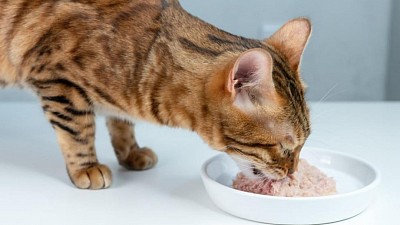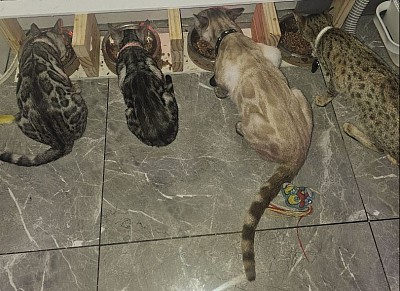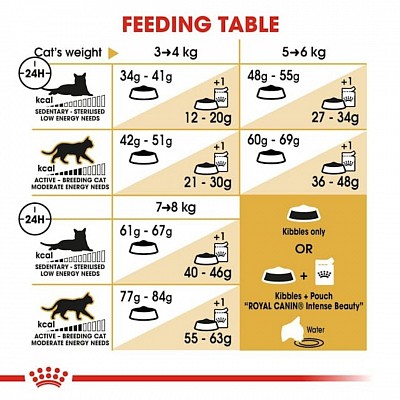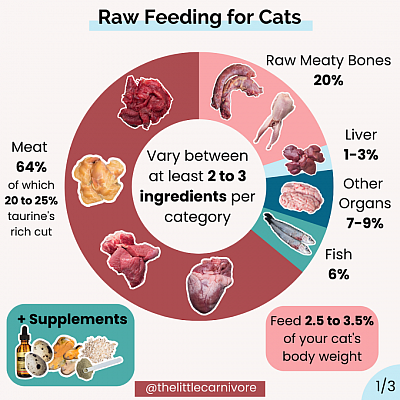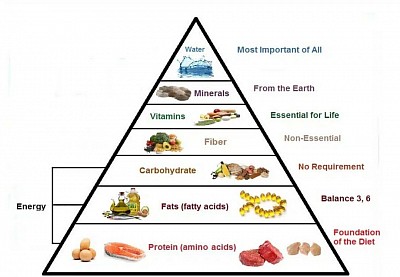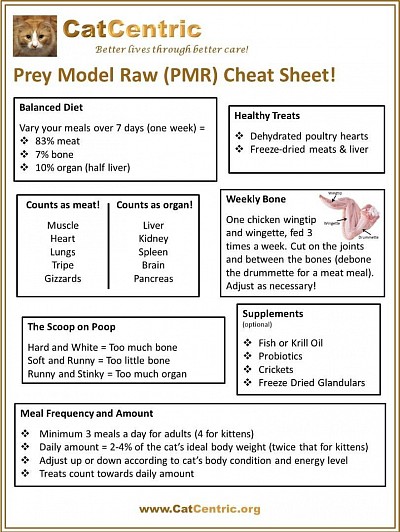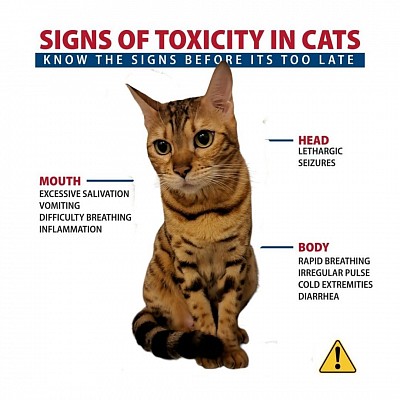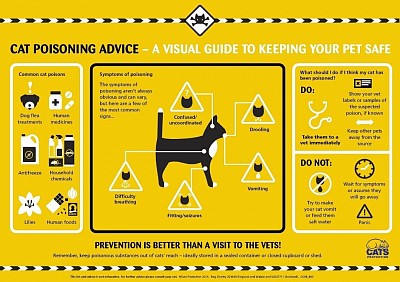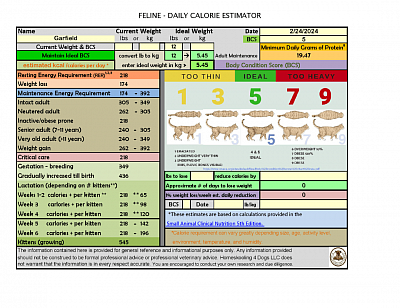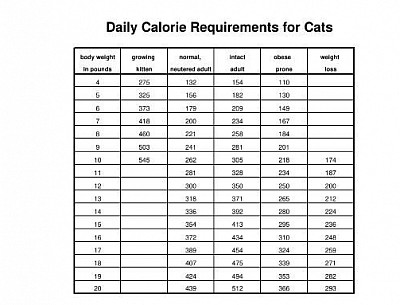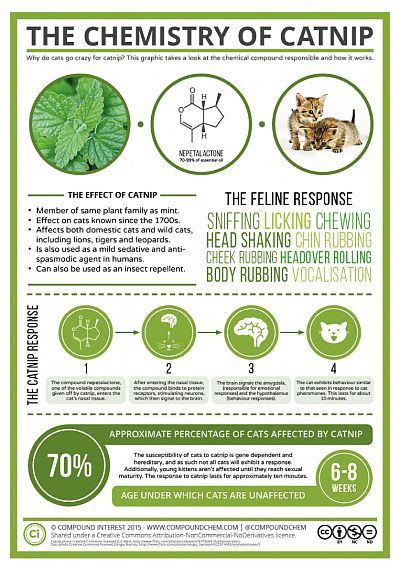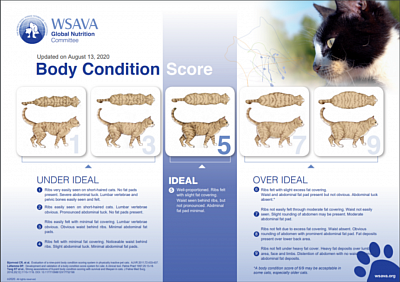Feeding
Feeding
Feeding cats requires providing a balanced diet that aligns with their natural feeding behaviours while managing portion sizes to prevent obesity. Cats typically prefer to have multiple small meals throughout the day. You can feed them wet food, dry food, or a combination of both. Always ensure fresh water is available for them. Be aware that some human foods, such as onions, garlic, and chocolate, are toxic to cats.
Feeding
Feeding your cat the right way is super important for their health. It means knowing what they need to eat, picking the right food, and setting up a good feeding routine. Remember, cats are “obligate carnivores,” so their diet has to be meat-based.
How to Feed Your Cat
- Choose Complete Commercial Food:
Go for “complete” foods that are balanced and packed with all the vitamins, protein, and minerals your cat needs. Treats or “complementary” foods should be given only now and then. Look for brands that are members of UK Pet Food—they meet high-quality standards. - Follow Life-Stage Feeding Guidelines:
Your cat’s needs change as they grow:
- Kittens need calorie-rich food for growth and should eat smaller meals more often.
- Adult Cats need a different balance and should be fed at least twice a day, or more often with smaller portions.
- Senior Cats (8 years and up) may benefit from easily digestible proteins and fewer calories to keep a healthy weight as they slow down. - Decide on Wet vs. Dry Food:
Both wet and dry foods can give complete nutrition, and many cat owners mix the two:
- Wet Food:
- High water content helps keep your cat hydrated, especially if they’re prone to urinary or kidney issues.
- Often tastier thanks to its aroma and soft texture.
- Once opened, refrigerate and use within 24 hours.
- Dry Food:
- Usually more budget-friendly and easy to store.
- Some kibble helps reduce plaque and tartar.
- More calorie-dense, so smaller amounts are needed. - Avoid Certain Foods:
Never feed your cat a vegan or vegetarian diet—they need meat for essential nutrients like taurine. Also, steer clear of human foods like onions, garlic, chocolate, grapes, raisins, and milk, as these can be toxic. - Limit Treats:
Treats should make up no more than 10% of your cat’s daily calories. Try rewarding your cat with playtime or using puzzle feeders to make treat time more fun and active.
Establishing a Healthy Feeding Routine
- Feed Multiple Small Meals:
In the wild, cats eat several small meals throughout the day and night. Try splitting their daily food into at least two, ideally more, small meals. - Use Puzzle Feeders:
These are great for tapping into your cat’s natural hunting instincts and slowing down fast eaters by dispensing small amounts of food as they play. - Measure Food Portions:
To keep your cat at a healthy weight, start with the feeding guidelines on the packaging, then adjust based on their weight, age, and activity. Using a kitchen scale is the best way to get portions just right. - Create a Suitable Feeding Environment:
- Use shallow bowls made of ceramic or glass—cats don’t like their whiskers touching deep bowl sides.
- Wash bowls daily to keep them clean.
- Place food away from the litter tray and in a quiet, low-traffic spot.
- Serve wet food at room temperature; warming it a bit can help picky eaters.
- Always have fresh water available in a separate bowl. - Transition Food Slowly:
To avoid tummy troubles, introduce new food gradually over at least a week. Start by mixing a small amount of the new food with the old, then slowly increase the new while decreasing the old.
When to Consult a Vet
If you’re worried about your cat’s eating habits, weight, or health—or if they have special medical needs—talk to your vet. They can help you figure out the best diet and feeding plan tailored just for your furry friend.
Royal Canin
Royal Canin Bengal Adult (Dry Food): This breed-specific dry food is specially formulated for adult Bengal cats aged 12 months and older. It features a distinctive Y-shaped kibble designed to fit the Bengal’s jaw, encouraging chewing and promoting oral hygiene. The formula is rich in protein (40%) and fat (18%) to support muscle mass and sustain the breed’s active, athletic lifestyle. It also includes highly digestible L.I.P. protein sources, tailored fiber content, and prebiotics to maintain balanced intestinal flora. Additionally, it is enriched with specific amino acids, vitamins, and omega-3 and omega-6 fatty acids to preserve the Bengal’s glossy coat and healthy skin.
Royal Canin Instinctive (Wet Food): Available in gravy, jelly, or loaf formats, this wet food is designed to meet the nutritional preferences of adult cats. It offers an optimal macronutritional profile that is highly palatable and aligns with cats’ natural dietary instincts. The balanced mineral content supports urinary health, while the ideal fat content and fiber blend help maintain a healthy body weight.
Combining Both Products: For Bengal cat owners who prefer a mixed-feeding regimen, Royal Canin Bengal Adult dry food and Royal Canin Instinctive wet food can be used together. This approach provides the breed-specific benefits of the Bengal Adult formula along with the variety and hydration benefits of wet food. Detailed guidance on combining these products is available on the Royal Canin website to ensure a balanced and nutritious diet.
Note: While this information is accurate to the best of current knowledge, always consult your veterinarian for personalized dietary advice for your cat.
Feline Dietary Safety and Nutritional Guidelines
Comprehensive Review of Feline Dietary Safety, Toxicology, and Clinical Nutrition
Introduction and Scope
The domestic cat (Felis catus) exhibits a distinctive physiology shaped by its evolutionary status as an obligate carnivore. This metabolic classification necessitates an exclusive dependence on nutrients predominantly found in animal tissues, rendering many common human foods nutritionally unsuitable or even acutely toxic to felines. This expert report delivers an exhaustive evaluation of food safety classifications, reinforcing and expanding upon established dietary guidelines through an analysis of fundamental nutritional requirements, pathogenic risks, and toxicity mechanisms.
The review underscores that any supplemental food or treat, irrespective of its safety profile, must be administered with strict portion control to preserve the complete and balanced nutrient composition provided by the cat’s primary commercial diet.
Section 1: The Obligate Carnivore Paradigm and Core Nutritional Requirements
1.1 Defining Obligate Carnivory: Metabolic Adaptations in Felis catus
The obligate carnivore designation reflects a physiological imperative resulting from millions of years of adaptation to a high-protein, low-carbohydrate diet. Felines possess unique metabolic pathways that differ significantly from those of omnivorous species, such as dogs and humans. For example, unlike omnivores, the hepatic catabolic enzymes in cats function at a fixed, elevated rate and lack adaptability. This necessitates a continuous, substantial intake of protein to support vital metabolic processes, including gluconeogenesis—the synthesis of glucose from non-carbohydrate sources, primarily amino acids. Consequently, cats cannot effectively downregulate protein catabolism during fasting or when consuming diets deficient in animal protein.
1.2 Essential Amino Acid Dependencies: The Critical Roles of Taurine and Arginine
Two amino acids exemplify the feline dependence on animal-derived nutrients: taurine and arginine.
Taurine
Taurine is an indispensable amino acid for cats. Due to minimally active endogenous synthetic enzymes and obligatory taurine loss via bile acid conjugation, felines cannot synthesise adequate taurine from precursors such as cysteine or methionine. Therefore, a consistent dietary supply, primarily from animal muscle tissue, is essential. Taurine deficiency, which may develop after prolonged depletion (ranging from five months to two years), results in severe and often fatal conditions, notably Feline Central Retinal Degeneration (FCRD), causing blindness, and Dilated Cardiomyopathy (DCM), characterised by cardiac muscle weakening that impairs systemic oxygen delivery.
Arginine
Arginine is essential for the urea cycle, the metabolic pathway responsible for detoxifying ammonia. Cats exhibit limited synthetic capacity for arginine, and this detoxification pathway remains unregulated even during fasting. Consumption of an arginine-deficient meal, even once, can rapidly induce hyperammonemia, leading to acute ammonia toxicity.
1.3 Carbohydrate Metabolism: Efficiency Limitations and Dietary Implications
Felines evolved consuming prey with minimal carbohydrate content, resulting in a digestive system with restricted capacity for carbohydrate metabolism. Cats utilise the hexokinase system, rather than the more adaptable glucokinase system found in omnivores, for glucose metabolism. Additionally, they demonstrate reduced activity of key enzymes involved in carbohydrate digestion and utilisation.
High-carbohydrate diets are inefficiently metabolised for energy and offer limited metabolic benefit to cats. Extensive evidence indicates that excessive carbohydrate intake elevates the risk of obesity and secondary metabolic disorders, particularly Feline Diabetes Mellitus (DM). Clinical studies confirm that diabetic cats fed low-carbohydrate diets have a greater likelihood of achieving disease remission.
The feline system’s limited capacity to regulate and utilise glucose has significant toxicological implications. This physiological constraint renders cats particularly susceptible to abrupt, artificial disruptions in glucose homeostasis. This explains the pronounced toxicity of substances such as xylitol, a sugar alcohol that induces an inappropriate, massive insulin release. The cat’s specialised metabolism amplifies the inherent toxic risk posed by this compound.
1.4 The Principle of Caloric Density and Meeting Energy Needs
The feline requirement for calorie-dense nutrition highlights the necessity of strictly limiting supplemental foods. The foundational guideline for all supplemental items—defined as any food not constituting a nutritionally complete and balanced commercial diet—is the 10% Caloric Rule (detailed in Section 5.2).
Exceeding this 10% caloric threshold risks nutritional dilution. Since most treats, including "safe" human foods such as lean meats or vegetables, lack completeness and balance, excessive reliance on these items can result in deficiencies of essential nutrients like taurine, specific vitamins, or minerals, which are meticulously balanced in commercial diets. Persistent violation of this caloric guideline compromises the overall nutritional profile, increasing the long-term risk of subclinical amino acid or vitamin deficiencies, even if the treatment itself is non-toxic.
Table 1: Feline Obligate Carnivore Nutritional Imperatives
Essential Nutrient
Nutrient
Feline Requirement
Basis for Obligate Dependence
Dietary Implications
Taurine
Essential Amino Acid
Endogenous synthesis enzymes demonstrate minimal activity; obligatory loss occurs via bile acid conjugation.
Must be consistently and directly obtained from animal tissue; deficiency leads to dilated cardiomyopathy (DCM) and vision impairment.
Arginine
Essential Amino Acid
Urea cycle enzymes are fixed and non-regulated; deficiency rapidly induces hyperammonemia.
Requires a continuous dietary supply (meat); critical for acute ammonia detoxification.
Protein
High (Minimum 62.5 g/1000 kcal)
Hepatic catabolic enzymes maintain elevated activity (non-adaptive); constant reliance on protein for energy through gluconeogenesis.
Cannot maintain health on plant-based diets; demands higher minimum protein levels compared to omnivores (e.g., dogs).
Carbohydrates
Not Required
Reduced enzymatic activity for efficient carbohydrate metabolism (e.g., glucokinase).
Excessive consumption increases the risk of obesity and secondary conditions such as diabetes mellitus.
Introduction to Meat: Safety, Preparation, and Risk Management
Section 2: Protein Sources: Safety, Preparation, and Risk Mitigation2.1 Cooked Proteins (Chicken, Beef, Turkey, Lamb, Eggs)
Cooked lean meats such as chicken, turkey, beef, and lamb are regarded as safe and provide an excellent, highly digestible protein source essential for obligate carnivores.
Preparation Requirements
All meats must be served plain, unseasoned, and thoroughly cooked. This is imperative because common human seasonings often contain toxic Allium compounds (onion, garlic) or excessive fat and salt. Pork is acceptable only if it is cooked, lean, and unseasoned, as the high-fat content in many pork cuts increases the risk of gastrointestinal upset.
Eggs
Cooked eggs represent a safe source of high-quality protein. Raw eggs are explicitly contraindicated due to the presence of avidin, an enzyme that inhibits biotin (Vitamin B7) absorption. Chronic ingestion of raw eggs can lead to biotin deficiency, adversely affecting skin and coat health.
2.2 The Veterinary Position on Raw Meat and Raw Eggs: Pathogen and Mechanical Hazards
Leading veterinary organisations, including the FDA, American Veterinary Medical Association (AVMA), and American Animal Hospital Association (AAHA), strongly advise against feeding raw meat diets or treats.
Pathogenic Contamination and Zoonotic Risk
Raw meat and eggs frequently harbour pathogenic microorganisms such as Salmonella spp., Listeria monocytogenes, Escherichia coli, and various Clostridium species. These pathogens pose immediate health risks to cats, potentially causing severe gastrointestinal illness or systemic infections.
Importantly, the risk extends to humans and other pets. Pathogens can be transmitted during food preparation and shed via the cat’s saliva or faeces, presenting significant zoonotic hazards within the household. Veterinary professionals must consider pets on raw diets as potential carriers of zoonotic organisms.
For immunocompromised patients—such as those undergoing chemotherapy or managing advanced liver dysfunction, kidney disease, or diabetes—the consumption of raw food substantially increases the risk of fatal systemic bacterial infections. Therefore, veterinarians strongly recommend against raw diets for any immunosuppressed cat.
Mechanical Hazards: Bones
Bones, whether raw or cooked, are strictly prohibited due to severe mechanical risks. They can splinter, causing lacerations or internal injuries, or obstruct the oesophagus or gastrointestinal tract, often requiring emergency surgery and potentially leading to complications such as sepsis if intestinal perforation occurs.
2.3 The Specific Risks of Raw Fish Consumption
Raw fish is deemed unsafe due to two independent yet synergistic mechanisms involving anti-nutrients and parasites.
Thiaminase Activity (Destruction of Vitamin B1)
Many raw fish species contain thiaminase, an enzyme that degrades Vitamin B1 (Thiamine). Thiaminase is heat-sensitive; thus, cooking neutralises this enzyme and eliminates the associated risk.
Chronic ingestion of thiaminase-containing raw fish results in acute thiamine deficiency, historically termed "Chastek's paralysis." Thiamine is critical for neurological function, and its deficiency rapidly induces severe neurological symptoms, including vestibular dysfunction, ataxia, visual impairment, seizures, and bilateral symmetric pannecrosis of brain tissue.
Helminthic and Parasitic Risks
Consumption of raw or undercooked fish is a primary route for cats to acquire helminthic parasites, notably fish tapeworms such as Diphyllobothrium spp. (e.g., D. latum).
Infection with Diphyllobothrium spp. in cats is linked to gastrointestinal symptoms including diarrhoea, vomiting, and weight loss. A more severe consequence, well-documented in definitive hosts, is pernicious anaemia, caused by the parasite’s absorption of Vitamin B12 from the host’s intestines. This dual pathology—thiamine destruction affecting neurological function and Vitamin B12 depletion impairing haematological function—renders raw fish particularly hazardous.
2.4 Cooked Fish (Salmon, Tuna, Sardines)
Cooked fish is safe when fed in moderation [Chart]. Thoroughly cooked and deboned fish provides highly digestible protein and beneficial Omega-3 fatty acids. However, anecdotal reports associate excessive, frequent consumption of human-grade canned fish with potential neurological disorders in cats, though specific toxic mechanisms (e.g., mercury toxicity) remain under investigation. Consequently, cooked fish should be offered only occasionally and must comply with the 10% Caloric Rule to avoid nutritional imbalances.
Section 3: Acute and Systemic Toxicants: Mechanisms of Feline Poisoning
Foods in this category must be strictly avoided as they contain compounds that induce rapid, severe, and often fatal systemic damage, primarily targeting the renal, haematological, or nervous systems.
3.1 Renal and Hepatic Toxicants
Grapes and Raisins (Vitis spp.)
Grapes and raisins are toxic to cats. Even minimal ingestion can precipitate acute renal failure. The specific toxic agent and threshold dose remain unidentified, rendering the risk unpredictable.
A notable clinical concern is the often asymptomatic and unpredictable onset of renal damage, which may begin within hours post-ingestion before clinical signs such as vomiting, lethargy, or polydipsia manifest. Due to the potential for irreversible silent injury, any suspected ingestion warrants immediate emergency veterinary care, including gastrointestinal decontamination and aggressive intravenous fluid therapy, irrespective of the quantity consumed.
Xylitol (Sugar Substitute)
Xylitol is highly toxic and commonly found in sugar-free gum, candies, baked goods, toothpaste, and some peanut butters.
Its toxicity stems from inducing a rapid and massive insulin release by mimicking glucose. In dogs, this causes severe hypoglycemia, potentially leading to collapse, seizures, and acute liver failure. Although clinical data in cats are less definitive, evidence indicates potential liver damage, with outcomes dependent on individual metabolic responses. Given cats’ inherent metabolic challenges with glucose regulation (as detailed in Section 1.3), they are particularly vulnerable to the artificial insulin surge caused by xylitol. Therefore, strict avoidance is essential.
Table 2: Acute Feline Toxicants: Risk Level and Mechanism
Toxic Agent
Toxic Agent
Safety Status
Target Organ System
Mechanism of Action
Grapes/Raisins
Toxic
Renal System
The toxic mechanism remains unidentified but results in acute renal failure; the risk is highly unpredictable.
Xylitol
Extremely Toxic
Metabolic/Hepatic
Induces a massive insulin release, causing severe hypoglycemia and potential hepatic failure.
Allium Species
Toxic
Hematological System
Causes oxidative damage to erythrocytes, leading to Heinz body formation and potentially life-threatening anaemia.
Raw Fish
Unsafe
Neurological System
Contains thiaminase enzyme which depletes Vitamin B1 (Thiamine), resulting in neurological symptoms known as Chastek's paralysis.
Alcohol
Toxic
Hepatic/Neurological
Induces profound central nervous system depression, hepatic injury, and may lead to fatal coma.
Hematological and Neurotoxic Agents Affecting Feline Health
3.2 Haematological and Neurotoxins
Allium Species (Onion, Garlic, Chives, Leeks)
Allium species are toxic to cats due to the presence of N-propyl disulfide compounds, which induce oxidative damage to feline red blood cells. This damage results in the formation of Heinz bodies, leading to hemolysis and potentially fatal anaemia. Cats exhibit heightened susceptibility compared to dogs because their erythrocytes are structurally more vulnerable to oxidative injury.
The primary risk often arises not from large quantities of raw vegetables but from concentrated forms found in human foods. Many seemingly innocuous table scraps, such as cooked meats, can become acutely toxic if they contain powdered garlic, onion derivatives, or heavily spiced broths. This underscores the essential guideline that any human food offered to cats must be entirely plain and unseasoned.
Neurotoxins and Cardiotoxins (Methylxanthines, Alcohol)
Methylxanthine compounds, including theobromine and caffeine found in chocolate, coffee, and tea, are highly toxic to cats. These stimulants can provoke symptoms ranging from vomiting and diarrhoea to tremors, seizures, and cardiac complications.
Alcohol ingestion constitutes a critical emergency. Even minimal amounts, such as a tablespoon, can cause severe central nervous system depression, liver and brain damage, coma, or death in cats.
Raw yeast dough poses a dual hazard: fermentation within the warm, moist gastric environment produces alcohol, resulting in toxicity, while simultaneously causing painful and potentially obstructive gas expansion.
3.3 Avocado (Persin)
Avocado is generally considered unsafe due to associated risks. It contains persin, a highly detrimental fungicidal toxin.
Cats appear considerably less sensitive to systemic persin toxicity. In felines, the primary concerns are mechanical and gastrointestinal: the large pit and skin present significant choking and intestinal obstruction hazards. Additionally, avocado flesh, though low in persin, is rich in fat and may induce gastrointestinal upset, including vomiting and diarrhoea. Consequently, most veterinary poison control centres advise complete avoidance of avocado due to these combined risks.
Section 4: Foods of Limited and Conditional Use (Dairy, Fats, Grains, and Sugar)
These foods are not acutely toxic but are unsuitable for the feline diet due to poor digestibility, potential gastrointestinal distress, or displacement of essential nutrients.
4.1 Dairy Products: Prevalence and Clinical Manifestations of Lactose Intolerance
Milk is classified as a food of limited use, primarily because lactose intolerance is highly prevalent among adult cats.
Mechanism of Lactose Intolerance
The common association of cats with milk originates from historical exposure to high-fat, low-lactose cream on farms. However, modern standardised cow’s milk contains substantial lactose levels. As cats mature beyond kittenhood, they naturally reduce or cease production of lactase, the enzyme required to digest lactose.
Without sufficient lactase, lactose remains undigested in the small intestine, where it ferments and attracts water and bacteria, resulting in gastrointestinal symptoms such as diarrhoea, vomiting, bloating, and abdominal discomfort, typically manifesting 8 to 12 hours post-ingestion. Cats are attracted to milk and dairy products primarily due to their fat and protein content, not the indigestible lactose sugar.
Cheese and Yoghurt
Cheese and plain yoghurt contain reduced lactose levels due to fermentation and may be tolerated in minimal quantities. Nonetheless, their high fat content and potential to cause gastrointestinal upset warrant cautious, limited administration.
4.2 Fatty Foods and Pancreatic Considerations
High-fat foods, including excessive fat trimmings, bacon, bacon grease, and non-lean pork cuts, are classified as limited. While high-fat intake is a primary cause of pancreatitis in dogs, feline pancreatitis often presents as chronic, nonspecific, or secondary to other conditions such as inflammatory bowel disease or diabetes.
Despite differing etiologies, dietary indiscretion involving fatty or heavily seasoned foods frequently provokes acute gastrointestinal symptoms (vomiting and diarrhoea) in cats. Therefore, high-fat items should be avoided to prevent digestive disturbances. Peanut butter, even when xylitol-free, is calorie-dense and rich in fat, necessitating strict limitation to small, infrequent servings.
4.3 Carbohydrate-Rich Items (Grains, Starches, Simple Sugars)
As obligate carnivores, cats have no dietary requirement for carbohydrates. Most starchy or sugary foods should be restricted due to their caloric density and minimal nutritional benefit.
Safe Starches and Vegetables
Plain, cooked items such as rice, oatmeal, and sweet potato are considered safe in small portions. When thoroughly cooked and unseasoned, they are easily digestible and may provide beneficial fibre. Cooked pumpkin (plain, not pie filling) is especially advantageous for digestion and hairball management. Other safe vegetables, provided they are cooked or pureed, include carrots, peas, green beans, broccoli, and zucchini.
These foods must be strictly limited; for example, sweet potatoes or peas should not exceed one small portion (less than one tablespoon for sweet potatoes) once or twice weekly. Although these are safe fibre sources, their consumption must not displace essential protein and fat calories. Overconsumption of even "safe" complex carbohydrates can cause gastrointestinal distress, necessitating vigilant monitoring for vomiting or diarrhoea.
Empty Calories and Sugars
Foods such as bread and pasta are classified as limited use because they provide primarily "empty calories". They supply simple carbohydrates without essential amino acids or vitamins, increasing the risk of obesity.
Bananas are also limited to small quantities. While they contain some vitamins, their high simple sugar and carbohydrate content render them inappropriate, particularly for cats with diabetes or gastrointestinal disorders.
Section 5: Safe Human Foods, Enrichment, and Quantitative Treat Recommendations
5.1 Safe Human Foods: Comprehensive Summary
When used strictly as supplemental treats with appropriate portion control, certain human foods can be safely offered. These must always be plain, unseasoned, deboned, and thoroughly cooked.
Proteins: Small amounts of lean cooked chicken, turkey, beef, lamb, and plain cooked eggs.
Starches/Vegetables: Plain, cooked rice, oatmeal, sweet potato puree, cooked pumpkin, cooked peas, carrots, and green beans.
Fruits: Small portions of blueberries, strawberries, melon, and apple slices (with all seeds removed due to cyanide content).
5.2 Veterinary Gold Standard: The 10% Caloric Rule for Treats
The foundational guideline for safe supplemental feeding is the 10% Caloric Rule.
Definition and Rationale
Veterinarians universally recommend that treats, including safe human foods, should not exceed 10% of the cat’s total daily caloric intake. The remaining 90% must come from a nutritionally complete and balanced commercial diet.
This rule serves two critical purposes: it ensures nutritional adequacy by preventing dilution of essential nutrients such as taurine and arginine, and it helps prevent obesity, which affects approximately 60% of cats in the United States. Many owners underestimate the caloric content of treats, which can be equivalent to several human doughnuts per day.
Implementation of the Treat Budget
For an average adult cat requiring 200 to 250 kilocalories daily, the treat allowance should not exceed 20 to 25 kilocalories. Given that typical small commercial treats contain 1 to 3 kilocalories each, it is easy to surpass this limit unintentionally.
Veterinary consultation is essential to determine the specific Daily Energy Requirement (DER) for each cat. For cats undergoing weight loss, the 10% rule applies to the target DER to avoid compromising weight reduction efforts. In such cases, using the cat’s pre-measured kibble as a "treat" is the safest and most nutritionally appropriate strategy, ensuring the treat is complete, balanced, and calorically accounted for. This approach supports weight management and prevents metabolic disturbances inherent to the obligate carnivorous nature of cats.
Table 3: Quantitative Treat Budget: The 10% Caloric Rule
Feline Weight and Nutritional Status Assessment
Feline Weight/Status
Estimated Daily Energy Requirement (DER)
Maximum Daily Treat Allowance (10% of DER)
Risk of Non-Compliance
Average Adult Cat (Maintenance)
200-250 kcal/day
20-25 kcal/day
Potential for nutritional imbalance, weight gain, and secondary metabolic conditions such as diabetes.
Weight Reduction Cat
Veterinarian-Determined Target
Maximum 10% of Target DER
Risk of undermining weight loss efforts; requires use of low-calorie treats or precisely measured kibble portions.
Typical Commercial Treat
1-3 kcal per treat
Not applicable
Exceeding the treat allowance is common; strict control over the number of treats, rather than just the type, is essential.
Caloric Requirements for Cats: Influencing Factors and Feeding Guidelines
Caloric requirements for a cat are influenced by factors such as weight, age, activity level, and spay/neuter status. Generally, a healthy adult cat requires approximately 25 to 35 calories per pound of body weight daily (about 55–77 calories per kilogram). For tailored recommendations, consulting a veterinarian is advised.
Calorie Estimates Based on Weight
The following values serve as a guideline for healthy adult cats; individual needs may vary.
Cat Weight (lbs) Spayed/Neutered (kcal/day) Intact (kcal/day)
5 lbs (2.3 kg) 125 175
8 lbs (3.6 kg) 200 280
10 lbs (4.5 kg) 250 350
12 lbs (5.4 kg) 300 420
15 lbs (6.8 kg) 375 525
Factors Affecting Caloric Needs
- Activity Level: Active cats, particularly those spending significant time outdoors, require more calories than less active indoor cats.
- Age: Growing kittens need increased calories and nutrients to support development, whereas senior cats typically require fewer calories due to a slower metabolism.
- Reproductive Status: Spayed or neutered cats often experience a reduced metabolic rate, decreasing their caloric needs. Conversely, pregnant or lactating cats require substantially more calories.
- Weight Management: Overweight cats need a calorie-restricted diet to promote weight loss, while underweight cats may require increased caloric intake temporarily to reach a healthy weight.
- Health Conditions: Certain medical issues, such as hyperthyroidism, can elevate metabolism and increase caloric requirements.
Calculating Your Cat’s Portion Size
To determine the appropriate portion size, identify the calories per serving listed on the food packaging and your cat’s daily caloric requirement. Divide the daily calorie need by the calories per serving. Treats should constitute no more than 10% of the total daily caloric intake. Offering multiple smaller meals throughout the day can also be advantageous.
Feeding Best Practices
Seek veterinary guidance for precise feeding recommendations. Online calorie calculators may assist in estimating needs. Regularly monitor your cat’s body condition and weight, adjusting food portions accordingly. Ideally, you should be able to feel your cat’s ribs without them being visible, and the cat should exhibit a defined waistline. Tools such as the Purina Body Condition System can aid in evaluating your cat’s weight status.
Behavioral Enrichment: The Benefits of Cat Grass and Catnip
5.3 Behavioural Enrichment: Cat Grass and Catnip
Catnip and cat grass are widely recognised as safe and beneficial for feline enrichment. Cat grass, typically consisting of wheat, oat, or rye grasses, provides trace fibre and acts as a natural emetic, facilitating the safe expulsion of hairballs.
Conclusions and Recommendations
This analysis reaffirms the established hierarchy of feline dietary safety, which is dictated by the cat’s unique physiology as an obligate carnivore. Key metabolic constraints—including fixed high protein requirements, reliance on exogenous taurine and arginine, and limited carbohydrate metabolism—underpin nearly all dietary restrictions.
Actionable Recommendations
Preparation is Protection: All safe meat proteins (chicken, turkey, beef, lamb, pork) must be served plain, thoroughly cooked, and unseasoned to eliminate risks of pathogenic contamination and exposure to concentrated Allium toxins found in seasonings.
Absolute Prohibitions: Immediate and complete avoidance is mandatory for grapes/raisins (due to risk of acute renal failure), Allium species (risk of Heinz body anaemia), alcohol, yeast dough, bones (risk of mechanical injury), and xylitol (risk of hypoglycemia and liver failure).
Strict Control of Pathogenic Exposure: Raw meat and raw fish are strongly discouraged by all leading veterinary organisations because of significant pathogenic and zoonotic risks. Raw fish poses an additional dual threat by inducing thiamine deficiency (neurological effects) and Vitamin B12 deficiency (haematological effects) due to thiaminase activity and parasitic contamination, respectively.
Quantitative Management: For all foods categorised as "Safe in Moderation" or "Limited" (including cooked meats, vegetables, and small quantities of dairy), strict adherence to the 10% Caloric Rule is essential. This guideline prevents nutritional imbalances and mitigates the growing risk of feline obesity, which predisposes cats to secondary metabolic disorders such as diabetes.
Any suspected ingestion of acute toxins—including grapes, raisins, xylitol, or Allium species—requires immediate veterinary consultation, regardless of the quantity ingested or the presence of clinical symptoms. Prompt decontamination and supportive care are critical to optimising the likelihood of a favourable outcome.
Feline Obesity
Excessive weight gain in cats is frequently the result of overfeeding, an abundance of treats, and insufficient exercise; however, it is essential to first exclude any underlying medical conditions through a veterinary consultation. Obesity in cats can lead to significant health complications and reduce their lifespan.
Health Risks Associated with Feline Obesity
Excess body weight adversely affects a cat’s health and may contribute to several diseases, including:
- Diabetes mellitus: Overweight cats have an increased risk of developing diabetes.
- Liver disease: Rapid weight loss can induce hepatic lipidosis (fatty liver syndrome), a potentially fatal condition characterised by fat accumulation in the liver.
- Cardiovascular disease and hypertension: Additional weight places extra strain on the heart.
- Arthritis: Excess weight stresses the joints, causing painful arthritis and diminished mobility.
- Urinary complications: Obesity is associated with bladder issues such as cystitis.
- Grooming difficulties: Overweight cats may have trouble grooming themselves, resulting in skin and coat problems.
Identifying Overweight Cats
A veterinarian can provide a definitive diagnosis, but the following signs may indicate excess weight at home:
- Ribs difficult to palpate: When gently running your hands along the cat’s chest, the ribs should be easily felt beneath a minimal fat layer.
- Absence of a visible waist: Viewed from above, a healthy cat displays a noticeable taper behind the rib cage; an overweight cat’s midsection appears rounded or bulging.
- Rounded, sagging abdomen: The belly may appear distended and hang downward.
- Reduced agility: The cat may be less inclined or able to jump, climb, or play, and may exhibit shortness of breath.
Safe Weight Loss Strategies for Cats
Developing a safe and effective weight loss plan with your veterinarian is crucial, as rapid or unsafe weight loss can precipitate life-threatening liver disease.
- Veterinary consultation: Before implementing any changes, have your cat examined to exclude medical causes of weight gain and to receive a customised weight management plan.
- Controlled portion sizes: Replace free-feeding with measured portions using a measuring cup at scheduled meal times.
- Dietary modification: Your veterinarian may recommend a specialised weight-management diet rich in protein and fibre to promote satiety while reducing caloric intake.
- Increased physical activity: Encourage more frequent play sessions using toys such as wands, balls, and laser pointers. Puzzle feeders or hiding small food portions can stimulate natural hunting behaviours.
- Gradual dietary transition: Introduce new food gradually by mixing it with the current diet over several days to prevent gastrointestinal upset.
- Monitoring progress: Regularly weigh your cat and track weight loss, aiming for a safe reduction of approximately 1–1.5% of body weight per week.

